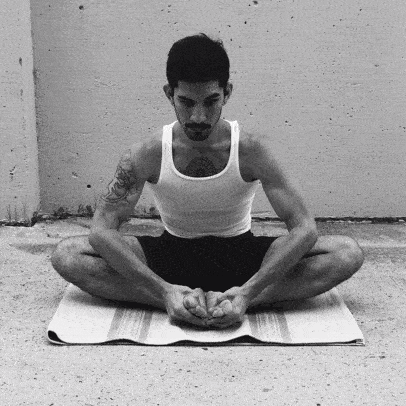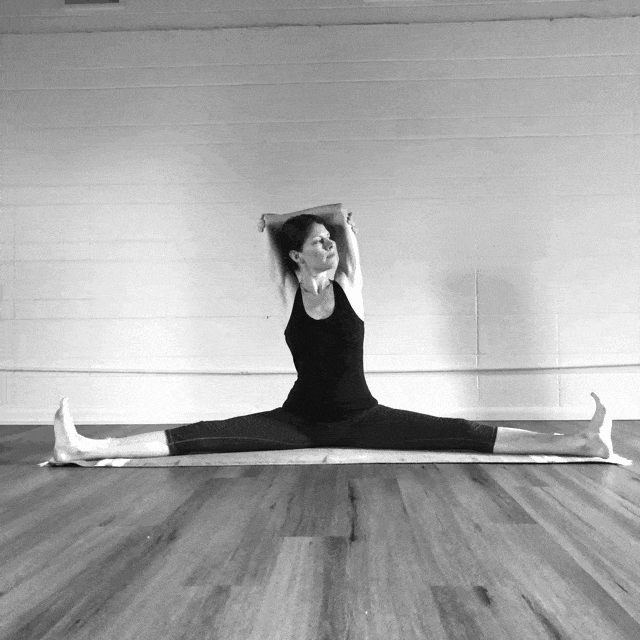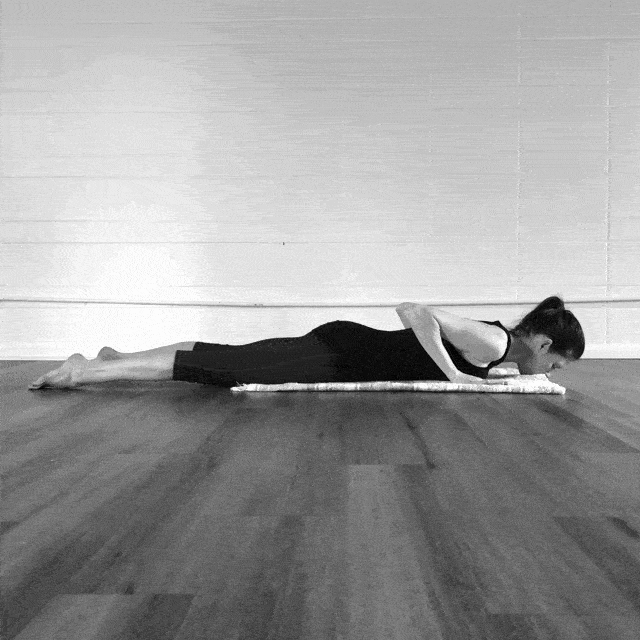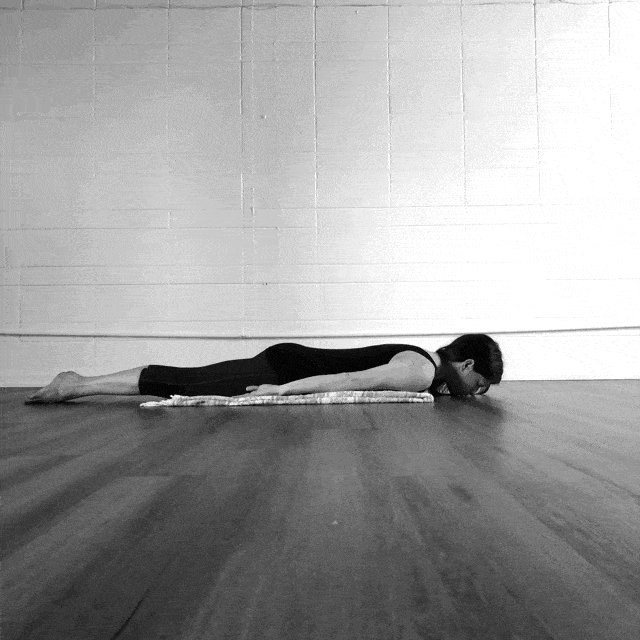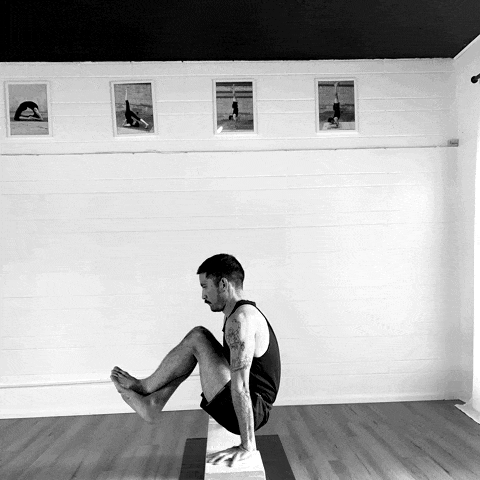Yogic Exercises for Meridian Therapy
Angela Patriarca, LAc.
Yin And Yang in Balance
Must have the shadow to have the light, and the light to have the shadow
If we only focus on yang (the bright, light and energetic) and cultivate yin (the dark, heavy, and hidden), (and vice versa) we remain out of balance and disease can ensue.
Bringing yin and yang into right relationship
There is nothing in life that escapes the rules of yin and yang
Once this balance is achieved there is perfect harmony of mind, body, soul and spirit
BHEEMASHAKTI YOGA SYSTEM
A system to prepare the body for asana
“Bheema”- based on one of the five pandavas named Bhim- his gift was being strong and mighty, male polarity, yang aspect
“Shakti”- female polarity representing energy, power and creativity, yin aspect
Showing us both sides (yin/yang) What we know and what we don’t know
WHAT ARE YOGIC EXERCISES?
7 dimensions of the body concept-bringing yin and yang into balance by systematically harmonizing the 7 major directions the body can open and energize.
This concept provides a complete understanding of the various “directions of opening” in the body. Each direction of opening is a pathway along which movements or postures are energized. When the direction of opening has become “energized”, strength, flexibility, and endurance are equally balanced.
Each of the 7 Dimensions correlates to the 7 major chakras.
Chakras
“A chakra is a center where nadis meet like the spokes of a chariot wheel.” Mandukya Upandishad 2:6
“The chakras are whirling vortices of energy which exist in the pranic (etheric) body of man at the linking points between the body and the mind. They occur at the intersection of ida and pingala in sushumna, being psychosomatic points, where mind and body touch.” Saraswati, Swami Satyananda Moola Bandha The Master Key
Chakras and Acupoints
They have a yin and yang aspect (anterior/posterior) (Ren/Du)
They have corresponding acupoints on the Ren and Du
Can use the acupoints to treat chakras that are imbalanced.
Bhastrika
Used to clear the channels and warm the body up before beginning the physical part of practice. Because of its invigorating and warming properties, it is very effective at increasing the body’s metabolism and reducing weight if desired. Bhastrika allows the practitioner to “shake off” or loosen areas of tightness or stress, therefore allowing the body to feel lighter and freer from obstruction.
Microcosmic Orbit
Bandhas
KUNDALINI
Derived from two Sanskrit words “kundala” (coiled) and “kunda”(pit)
Coiled snake that lays dormant until activated in the mooladhara
The mind awakens/is illuminated as the kundalini rises through the spinal cord
It ascends along the sushumna to the brain (Du to the brain) and works on the chakras at the psychophysiological level
In order for the kundalini to rise to its final destination (sahasrara chakra/Du 20), it must pierce through three major granthis (psychic knots)
Granthis/dan tians/Chakras
(from Moola Bandha The Master Key by Swami Satyananda Saraswati)
“…three bandhas act directly on the three granthis or psychic knots. Moola bandha is associated with brahma granthi, uddiyana bandha with vishnu granthi and jalandhara bandha with rudra granthi. The granthis prevent the free flow of prana along sushumna nadi and thus impede the awakening of the chakras and the rising of kundalini.”
Kapalabhati
This breathing energizes the body much quicker than practicing without it and quickly strengthens the lower bandha system including mula bandha and uddiyana bandha. The core strategy to strengthen and open the 7 dimensions of the body is the powerful combination of kriya and kapalabhati.
THE 7 DIMENSIONS OF THE BODY PRACTICE
Warm up Routine activates Ren mai, Du mai, Chong mai and Kidney meridian
Bhastrika dries damp/phlegm accumulation and activates Dai Mai and Microcosmic Orbit
Energizes and aligns the 7 chakras
Meditation sedates the mind/calms shen
Chong mai: Sea of Blood
Our destiny, our curriculum, our ancestry, our personality
Ren mai: Sea of Yin
Vessel of bonding, maternal archetype, how we self care and self love, how we are in relationship to others
Du mai: Sea of Yang
Allows for individuation, mediates one’s exploration in the world, sense of home and support, allows for the realization of one’s needs and demands others recognize these needs as well
Dai mai: Vessel of Latency
Responsible for absorbing excess from post-natal environment, stores this excess at the level of jing, deals with “violations” one has dealt with in life and corresponding emotions, holds onto these life/emotional issues until one is strong enough to deal with them, can greatly compromise one’s ability to create what they want in their life
Organs and the emotions
Under normal conditions, the seven emotions generally do not cause disease. However, sudden, intense or prolonged stimulation of the emotions which lie outside the normal regulatory range of physiological body function will result in disturbances to the dynamics of qi, imbalance of yin-yang, blood and the five Zang organs.
Compendium of yogic exercises and meridian therapy by dimension
लँ
Standing Splits Dimension
Chakra: Muladhara
Location: Du 3 (L4/L5), Ren 1
Associated bandha: Moola bandha
Organs: Spine, Kidneys, Urinary Bladder, Large Intestine
Yin/Yang meridians: Kidney/Urinary Bladder
Gland: No gland, however, according to yogic philosophy, the perineal body is a vestige of a gland which has atrophied over human evolution and can be reactivated by the practice of moola bandha. Stimulates the gonads in both sexes.
Some say adrenals.
Nerve Plexus: Sacral plexus (innervates lower limbs)
Element: Water/Fear
Musculoskeletal: Psoas, iliacus, gastrocnemius, soleus, foot muscle
Single Leg Kriya: 3 Arm Yin/3 Arm Yang, Gallbladder, Liver, Spleen
Double Leg Kriya: Bladder, Kidney, Liver
Baddha Konasana: Gallbladder, Kidney, Liver, Spleen
Leg Extension A: 3 Arm Yin/3 Arm Yang, Bladder, Gallbladder, Kidney, Liver, Spleen
Leg Extension B: 3 Arm Yin/3 Arm Yang, Bladder, Gallbladder
Leg Extension C: Bladder, Gallbladder
Standing Balance: Bladder, Kidney, Liver, Spleen
Hanumanasana: Bladder, Stomach
Samakonasa: Kidney, Liver, Spleen
Samakonasa Kriya: 3 Arm Yin/3 Arm Yang, Bladder, Gallbladder, Kidney, Liver, Spleen
Lotus: Gallbladder, Kidney, Liver, Spleen
वँ
Forward Bend Dimension
Chakra: Swadhisthana
Location: Du 4 (L4/5), Ren 3-8
Associated bandha: Moola bandha
Organs: Organs of reproduction
Yin/Yang meridians: Spleen/Stomach
Glands: Ovaries, testes, adrenals
Nerve plexus: Lumbar plexus (innervates pelvic girdle and lower limbs)
Element: Earth/Worry
Musculoskeletal: Hamstrings
Activated Child's Pose: Kidney, Energizes Microcosmic Orbit
Forward Bend Kriya: Bladder
Forward Bend Routine: Bladder, Gallbladder
Prasarita Padottanasana: Bladder
Leg Behind the Head: Bladder, Gallbladder
र
Spinal Twist Dimension
Chakra: Manipura
Location: Du 6/7 (T10-12), Ren 12
Associated bandha: Uddiyana
Organs: Liver, Spleen, Stomach, Gallbladder
Yin/Yang meridians: Spleen/Stomach/Liver
Gland: Pancreas
Nerve plexus: Lumbar plexus (innervates pelvic girdle and lower limbs)
Element: Earth/Worry
Musculoskeletal: Abdominals, quadriceps
Ardha Matsyendrasana: Gallbladder
Bharadvajasana: Gallbladder, Stomach/Spleen
Standing Twist: Gallbladder
Parivrtta Utkatasana: Gallbladder
य
Backbend Dimension
Chakra: Anahata
Location: Du 14 (T5/6), Ren 17
Associated bandha: Uddiyana
Organs: Heart, Lungs
Gland: Thymus
Yin/Yang meridians: Heart/Small Intestine
Nerve plexus: Brachial plexus (innervates pectoral girdle and upper limbs)
Element: Fire/Joy
Musculoskeletal: Erector spinae
Standing Backbends: 3 Arm Yin, Kidney, Spleen, Stomach
Ustrasana: 3 Arm Yin, Kidney, Spleen, Stomach, Small Intestine
Laghuvajrasana: 3 Arm Yin, Kidney, Spleen, Stomach, Small Intestine
Kapotasana: 3 Arm Yang, Kidney, Spleen, Stomach, Small Intestine
Cobra: 3 Arm Yin, Kidney, Spleen, Stomach, Small Intestine
Shalabasana: 3 Arm Yin, Kidney, Spleen, Stomach, Small Intestine
Dhanurasana: 3 Arm Yin, Kidney, Spleen, Stomach, Small Intestine
Supta Virasana: Kidney, Spleen, Stomach, Small Intestine
Bridge: Large Intestine, Lung, Stomach, Small Intestine
Wheel: 3 Arm Yang, Kidney, Pericardium, Spleen, Stomach, Small Intestine
Locust: 3 Arm Yin, Spleen, Stomach, Small Intestine
हँ
Shoulder Stand Dimension
Chakra: Vishuddha
Location: Du 14 (C7/T1), Ren 22
Associated bandha: Jalandhara
Organs: Lungs/Large Intestine (via the vagus nerve)
Gland: Thyroid
Yin/Yang meridians: Lung/Large Intestine
Nerve plexus: Brachial plexus (innervates pectoral girdle and upper limbs)
Element: Metal/Sadness and Grief
Musculoskeletal: Pectorals, triceps, forearms, latissimus dorsi
Shoulder Stand Routine: Bladder
उँ
Handstand Dimension
Chakra: Ajna
Location: Du 15 (below C2 atlas/axis), yin tang
Associated bandha: Jalandhara
Organs: Left brain, lower brain, ears, nose, left eye
Gland: Pituitary, pineal glands (thalamus, hypothalamus)
Yin/Yang meridians: Liver/Gallbladder
Nerve plexus: Cervical plexus (innervates muscles of neck and diaphragm)
Element: Wood/Anger
Musculoskeletal: Anterior and posterior neck muscles
Downdog presses: Bladder, Heart, Small Intestine
1st Stage Handstand: Energizes Microcosmic Orbit/Activates Sushumna
2nd Stage Handstand: Energizes Microcosmic Orbit/Activates Sushumna, Energizes Microcosmic Orbit/Activates Sushumna
3rd Stage Handstand: Energizes Microcosmic Orbit/Activates Sushumna
ॐ
Forearm Stand Dimension (Headstand)
Chakra: Sahasrara
Location: Du 20/ Du 16 (below C1 Atlas/occiput)
Associated bandha: None-not on spine
Organs: Right brain, upper brain, right eye
Gland: Pineal gland
Yin/Yang meridians: Pericardium/San Jiao
Nerve plexus: None-not on spine
Element/Emotion: Fire/Fright
Musculoskeletal: Facial muscles, trapezius, supraspinatus
Dolphin Presses
Inverted Dolphin at Wall: Heart, Small Intestine
Dolphin Kick ups: Energizes Microcosmic Orbit/Activates Sushumna
Om Meditation
Om meditation is used to harmonize the nervous system. It is an exercise of humming achieved by the repetition of the sound OM with a closed mouth. The idea is to increase the vibration of the inner body, particularly through the upper chakras. There are various head positions and stages used to achieve greater balance of the internal systems. Master Suresh recommended this meditation for correcting major imbalances such as headaches, insomnia, high blood pressure and other treatable diseases. He also said that mental illness could be healed with Om meditation with 60% efficacy.
coming up:
A closer look at…
Bandhas and their effect on the endocrine and nervous systems
Yoga for women’s health
Moon cycle practices
Yogic exercises for the 8 Extraordinary Vessels
Bibliography
Chase, Christopher R. “The Geometry of Emotions: Using Chakra Acupuncture and 5-Phase Theory to Describe Personality Archetypes for Clinical Use.” Medical Acupuncture, Mary Ann Liebert, Inc., 1 Aug. 2018, https://www.ncbi.nlm.nih.gov/pmc/articles/PMC6106753/.
Saraswati, Satyananda. Asana Pranayama Mudra Bandha. Yoga Publications Trust, 2013.
Buddhananda, and Satyananda Saraswati. Moola Bandha: The Master Key. Yoga Publications Trust, 2013.
Microcosmic Orbit diagram adapted from The Complete System of Self Healing: Internal Exercise, by Dr. Stephen T. Chang. San Francisco: Tao Publishing 1986, p. 200.
Ikeda, Masakazu. The Practice of Japanese Acupuncture and Moxibustion: Classic Principles in Action. Eastland Press, 2005.
Credits
Course: Angela Patriarca, LAc.
Design: Sumeet Banerji



















